While a man’s shirt has always been deemed an absolutely critical component of his fashion attire, the emphasis on the dress shirt in the recent years has resulted in an increased demand for both specialty off the rack shirt retailers and bespoke / made to measure shirt specialists and there are an abundance of shirting patterns to choose from. This guide is here to inform you of different types of checkered shirt patterns, given the increased interest in this pattern variation over the last few years, versus the traditional, more conservative striped shirts that used to flatter men’s torsos during the days of yesteryear.
Here are 9 types of check patterns for shirts:
Gingham Shirts
Gingham is a checkered pattern shirt that is distinguished by what are typically white and colored even sized checks. This pattern is formed by horizontal and vertical stripes, typically of the same color, that cross each other on a white background to form a checkered design.
Gingham was introduced to the mid 18th century, with blue and white being the most popular choice of color. Today, gingham is offered in a variety of colors. Gingham checks are versatile and can be worn in a variety of settings, both formal and casual. Of course, I would most likely avoid the pink gingham shirt at work, but its up to you to discern if you have that level of flair!
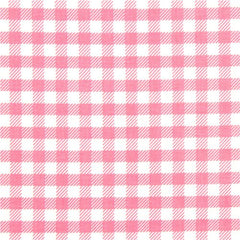
Madras Shirts
Madras is a pattern that originated in the southern city of Madras, India. It is typically considered a summer fabric style that is distinguished by a pattern of colorful checks and stripes. The pattern consists of different colored stripes that cross each other to form unevenly sized checks. A madras shirt is best suited for casual or preppy wear during the summer months.
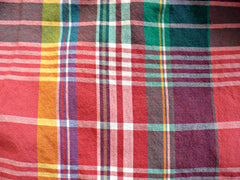
Tartan Plaid Shirts
Tartan Plaid consists of vertical and horizontal stripes crossing each other to form uneven checks. While similar in pattern to the madras check, tartan plaid ties are less colorful with significantly less color tones than your typical madras styled shirt. Tartan plaid shirts are best suited for more casual settings.
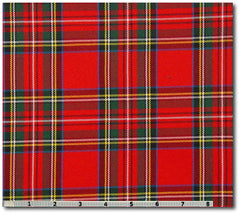
Shepherds Check Shirts
Shepherds Check is a pattern consisting of alternating colored stripes crossing each other to form a checkered pattern, set against a twill weave backdrop. While a Shepherds Check looks similar to a Gingham checkered shirt, the key difference is that it is set against a twill background.
Shepherds Check has derived its name from the plaid design worn by Shepherds in the hills of the Scottish borders. This pattern is perfect for a more formal, work setting.
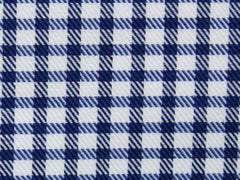
Houndstooth Shirts
Houndstooth features a pattern resembling checks consisting of broken, uneven and pointed lines (resembling a hound’s tooth). Houndstooth pattern is traditionally black and white but now comes in a variety of colors across a range of garments and accessories.
The traditional black and white variant of houndstooth is best suited for the workplace, where as other color variations are best suited for more informal settings.
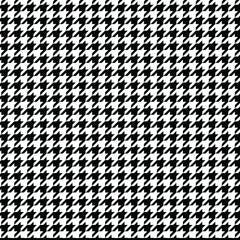
Windowpane Shirts
Windowpane consists of relatively thin stripes crossing each other to form a large checkered pattern, resembling the patterns of pane on a window. Given the two tone, conservative color schemes of windowpane shirts, they are considered appropriate attire for the workplace.
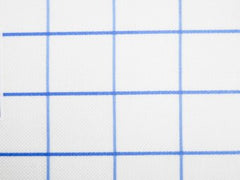
Graph Check Shirt
Graph Check is a pattern consisting of lines crossing each other to form small checks, resembling graph paper pattern. The pattern is characterized by solid, thin, single colored stripes that cross each other. As is the case with windowpane shirts, given the two tone, conservative nature of graph check shirts, they are considered suitable for formal workplace settings.
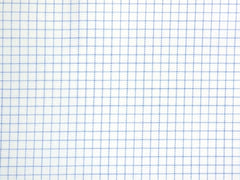
Tatterstall Shirts
Tatterstall checkered patterns consist of regularly spaced vertical and horizontal stripes, alternating, and sometimes three colors. Tatterstall checkered shirts are great for a casual evening out, but may appear a tad less than formal for your typical work setting.

Pin Check
Pin Check s a pattern created with pin sized stripes that cross to form tiny checks that appear as dots from a distance. This pattern generally consists of one color set against white. The intricate nature of the pattern creates an element of texture and depth, and is perfect for a formal work setting!

Checkered Shirt Pattern Summary
We have highlighted 9 checkered shirt patterns here, which is a lot of information to digest! So to summarize:
-
For more formal work events, graph checks, pin checks, windowpane and shepherd checks are the most appropriate. Gingham and houndstooth are appropriate, based on color choice.
-
For less formal attire such as an evening out, madras, tartan plaid and tatter stall are more appropriate. Gingham and houndstooth are appropriate once again, based on choice of color.
Matching Ties To A Checkered Shirt
As has been covered in one of our previous articles, matching ties to a checkered shirt involves seeking out two specific elements:
(1) A color scheme that suits your preferences for matching your tie to your shirt. As a general guide, a color wheel is extremely useful in discerning which color scheme you would like to adopt to accentuate your preferred look.
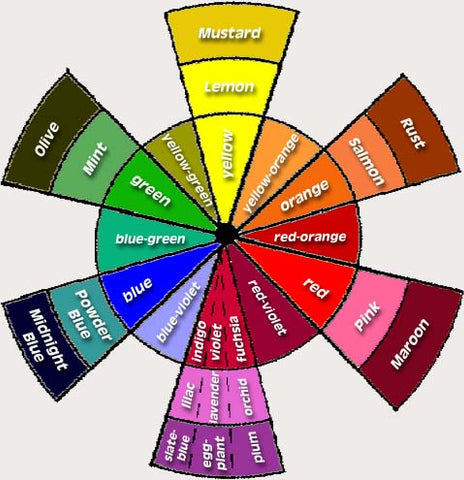
Complimentary colors are directly across from each other on the color wheel and provide the starkest contrast e.g blue and orange, red and green and yellow and purple.
Triadic color schemes involve choosing colors that are equally spaced apart on the color wheel and that form a triangle (hence, triadic).
Triadic color schemes provide less direct contrast than a complimentary color scheme, but still provide a vibrant balance. For best effect, allow one color to dominate the other two (e.g blue, red and yellow, with blue being the dominant color).
As is generally the case with matching ties to a shirt, having the predominant color of your tie match a secondary color of your shirt, or vice versa, will create a pronounced, harmonious effect and will allow you to look your dapper best.
(2) Pattern Selection When selecting a matching tie to go against a checkered shirt, ideally, you want to choose a pattern that is contrasting both in style and proportion for greatest aesthetic enhancement. So, for a graph checkered shirt, for example, you could choose a widely spaced striped tie.
Personally, I prefer dotted designs or wider spaced abstracts / floral patterns to go against smaller checkered shirts, as they break up the lines of the checkered pattern and provide a soothing but striking visual contrast with the difference in both style and spacing of pattern.
Conversely, I prefer narrower spaced dotted and abstract designs against a window pane or larger spaced checkered shirt, as they provide a similar soothing but contrasting aesthetic.
If you are having trouble matching ties to a checkered shirt, The Dark Knot's filtered search system can be a great tool, as you can find ties based on matching shirts, matching suits and even the type of occasion that you need the tie for!
To view our line of exquisite ties that will match with a checkered white shirt, please click here.
To view our line of gorgeous silk ties that will match with a checkered blue shirt, please click here.
To view our range of vibrant ties that will complement a checkered pink shirt, please click here.
A wider (or narrower) striped tie can work against a smaller (or larger spaced) checkered shirt if pulled off correctly, but it does add another layer of line based designs to an already heavy line based checkered shirt. And as a word of caution, if you are opting for a striped tie against a checkered shirt, you are best off with a solid suit!
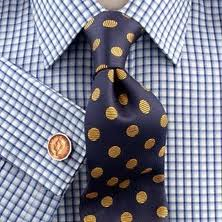
A small graph checkered shirt goes well against a wider spaced, large dotted/circle tie!
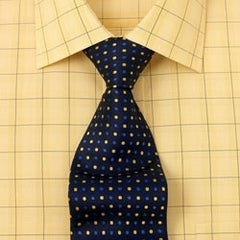
A large checkered yellow windowpane shirt is well matched with a pin dot navy and yellow tie!
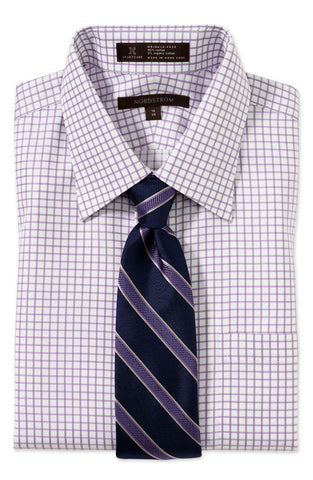
A small purple graph checkered shirt is well complimented by a wider striped navy with purple tie!
And that's a wrap for this one! We hope that you have enjoyed reading this article as much as we did writing it!




